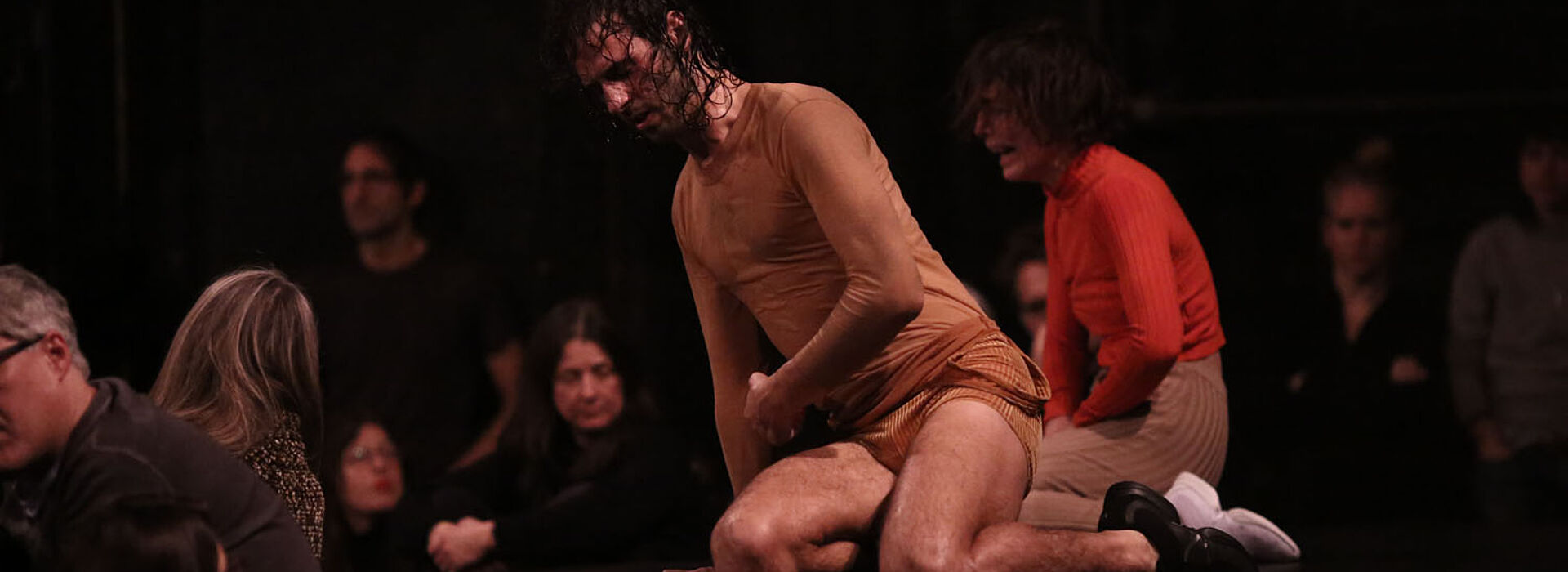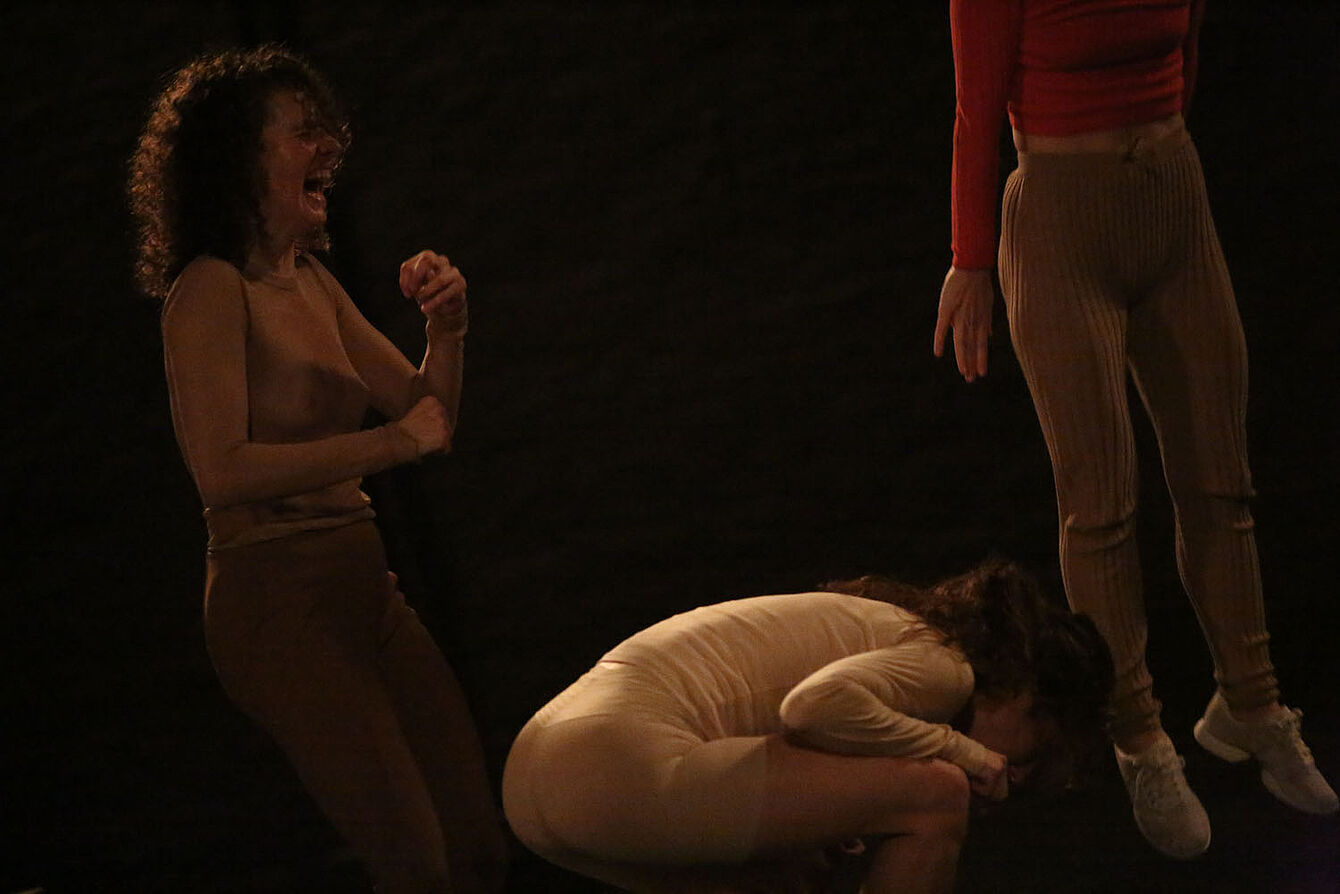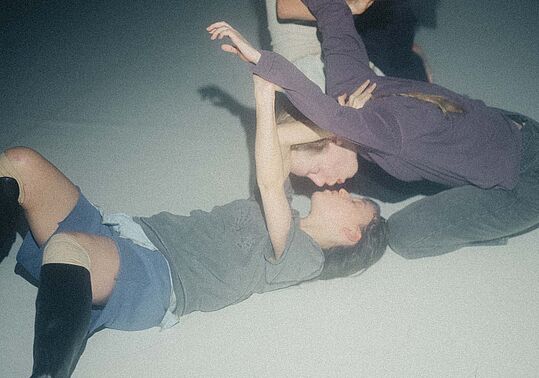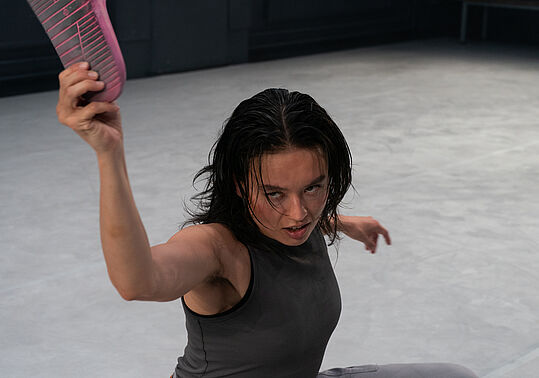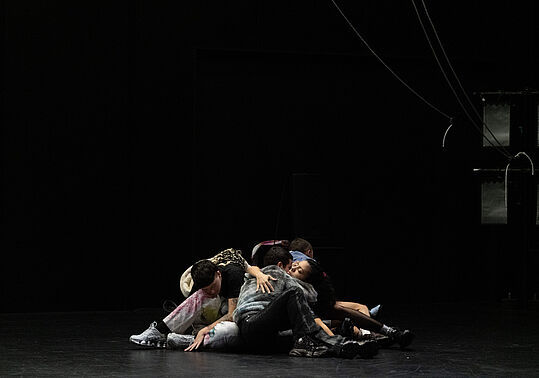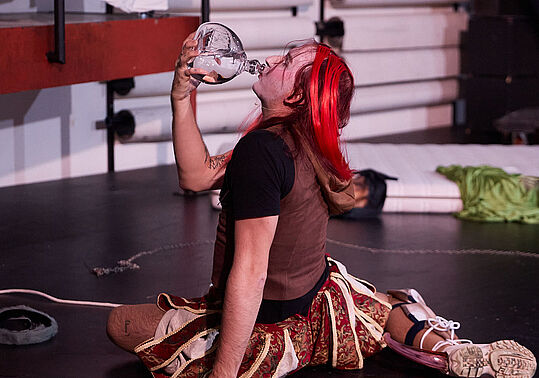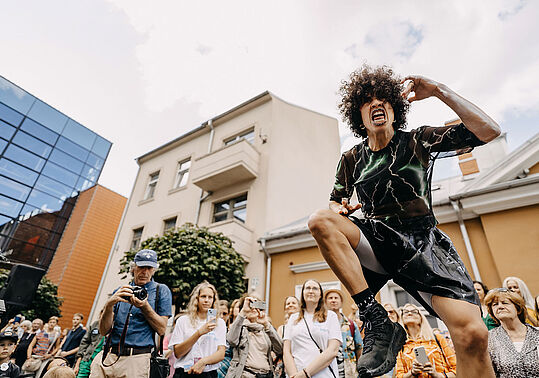Moriah Evans: SENTIENT EXPULSIONS CONFIGURE
An attempt to write a manifesto when manifestos can no longer be written due to the tremendous heft of blatant failures; Perhaps this is just another proposal for the relation between dance and choreography; Maybe it is a moment to spite cynicism in favor of idealism, fantasy and the hope of bold claims.
SENTIENT
1. Dance underscores that we feel in order to exist. We are in a state of figuring out ourselves — of refiguring our bodies1 — for we cannot know what a body is. We are not our bodies, and yet we are so much our bodies, particularly when we plunge into the existential conundrum of having a body, of being a body, of dealing with one’s embodiment in the world, today, now.
2. Dance must address the ways in which working from the unseen, yet felt, world of bodies and space might unfold into new social possibilities. The raw bodies and raw feelings exposed in dancing are not points of departure, but the (perhaps impossible) points of arrival. Working at a scale imperceptible to the human eye, performers and audience together must build a relation that resides elsewhere than the theater’s dependence on vision. Dance (and choreography) must be self-determined and arise from feeling.
3. Dance builds off the affect of perception–of being watched (whether by an audience or other dancers in the performance), and of watching over one’s self. In dance an interdependent yet decentralized field must anchor the pursuit of sensation, imagination, specificity, transformation and extreme presence. Maybe dance is just an interconnected web of perceptions and intentions, inside and outside of bodies, engaged in discrete tasks and actions.
4. Dance must unscript the dancer’s body through dance, against dance and its compulsions to use bodily facility as a vehicle for visual communication and expression. Dance must drastically reduce its quotient of theatricality—i.e. being an art work that exhibits its awareness and plays to the viewer’s gaze—and drastically increase its absorption—i.e. not exhibiting any awareness to the fact that there is a viewer. Dance must block vanity; the work must remain as an internally motivated activity that is not externally driven.
EXPULSIONS
5. Dance must embrace uncontrollable affective states and the inexact vocabularies of flesh, rejecting emotional negation often associated with minimalist dance. Dance must push the body towards monstrous extremes that adjoin micro movements as a method with tasks that might be called expulsion work such as actions of laughing, crying, jumping, and wasting—to dance from a post-state of waste within the body. Dancers must refuse the possibility of bodily control while being in control of a palpitating body undeniably alive through viscera. With the body as an assemblage of ‘desiring machines’ producing fluxes of matter and nothing else, dance rigorously examines boundaries and internal-external predicaments.
6. After the vague and mysterious category of bodily inhabitation known as “Release technique”, Expulsion technique asks dance and the dancer to digest and regurgitate that which is comprehensible and spew and spit it out. Dance must expel its predilection for convention; it holds steadfast to forms arrived at by the art form. We must confront abjection and its doubleness—moments when we find the impossibility within our bodies that constitutes our very being. Abjection functions as “ambiguity” and returns us to the state of the “timeless violence in which a body becomes separated from another body in order to be.” Abjection “is a composite of judgment and affect, of condemnation and yearning, of signs and drives”2.
7. Expulsion technique examines how flesh feels and the politics of flesh. Dance must assume significance is inherent in the human body. Marxistfeminist Silvia Federici’s call for a struggle that begins with: “the re-appropriation of our body, the revaluation and rediscovery of its capacity for resistance, and expansion and celebration of its powers, individual and collective... From dance we learn that matter is not stupid, it is not blind, it is not mechanical, but has its rhythms, has its language, and it is self-activated and self-organizing.”3
8. In Expulsion technique, dance must go from climax to climax towards a state of endless catharsis. Catharsis progresses towards a stage of disorder into renewal. It remains speculative, yet possible to share. We must not “know” concretely what constitutes an expulsion technique. It questions rather than solves because dance must produce choreographies that critically rethink the parameters of originating problems. Expulsion technique is a resurgence of flesh towards the future of dance with an openness of becoming. Western Eurocentric American concert dance could be conjectured as movement from contained and controlled form. Expulsion technique makes a death of dance controlled into order and moves towards an anti-form energetics. This anti-form dancing strives towards an invisible yet undeniable choreographic form through the means of doing, being and observing dance.
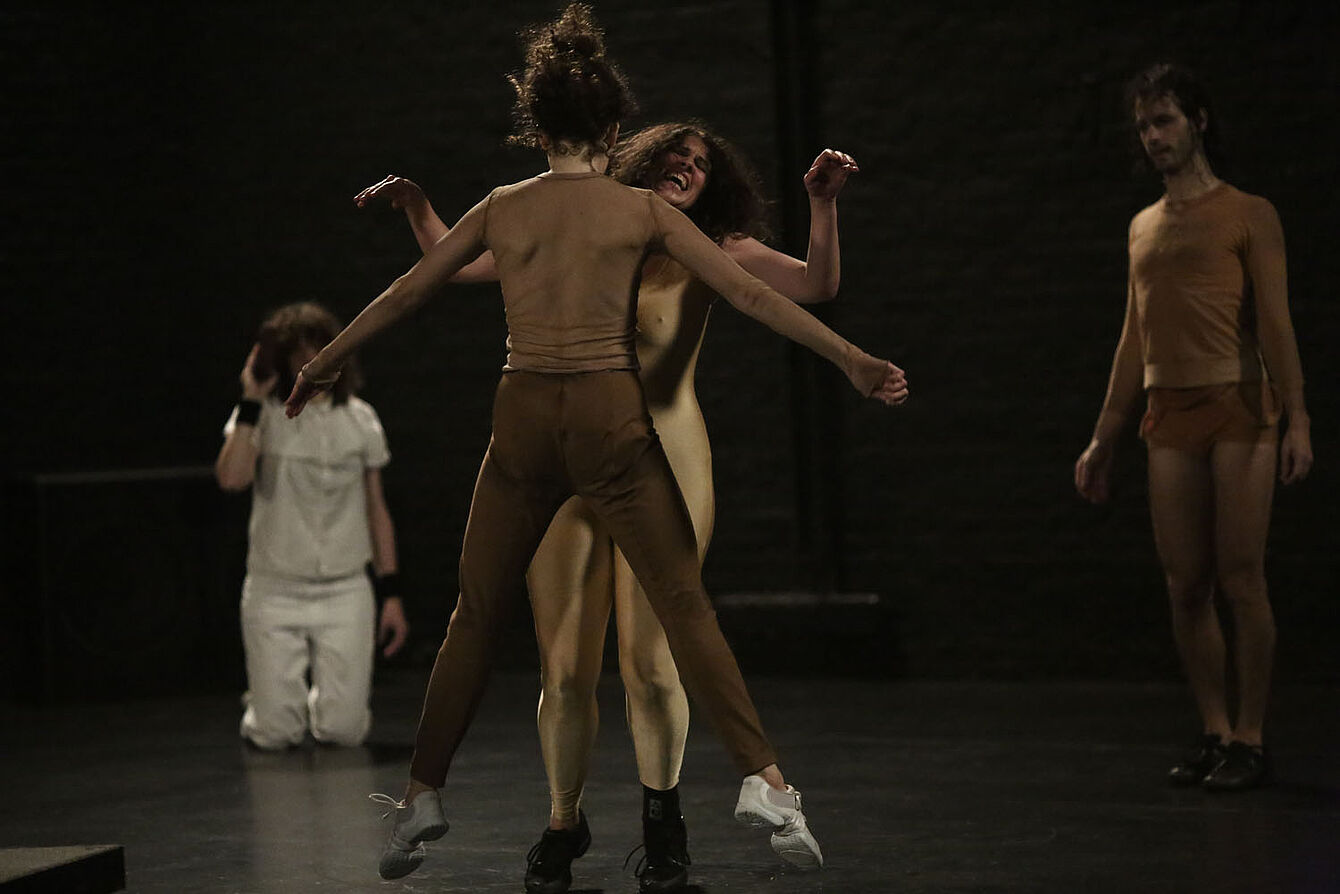
CONFIGURE
9. In dance, as well as in life, we are always necessarily in a relational construction. Every dance is also a study in how to work together as a group. The spectrum of dance to choreography and back again must expose this with increasing transparency. Dancing must produce choreographic structure through a process of shared decision-making. Choreographic structure must appear and dissolve daily, in the presence of the public, in the same way “dancing” is said to disappear in the wake of its enactment.
10. The construction of a dance necessarily includes its display just as the performance of a dance must also include the means by which it has been constructed. Dance and choreography must attend to the processes of its appearance as a type of form. Dance is as much created through methods of reflection—questioning, answering, coaching, inscribing and discussing—as it is through action. Reflection processes must be integrated into witnessing a staged “piece.” The roles of dancers, audience, designers, dramaturgs and choreographers must no longer be delineated clearly. All elements in a dance must have multiple roles at any given moment. Nothing, no one functions clearly as one entity, nor solely as representation.
11. The dancing body must fight signification. Dance must propose bodies that function as direct threats to the social drama of comprehensibility.4 Choreography must aim to move beyond display and tableau into a visceral, cathartic environment that is maintained to the level of state rather than a singular extreme moment. Dance must defy image production (and consumable meaning) all the while being an image such that the sensorial order overshadows the visual field. Bodies can be a series of portals to the imaginary, to felt sense, to alternative logics. The body functions as a stage, an explicit and opaque site. Who controls the unfolding of bodily signifiers? What is deemed appropriate or inappropriate? Every body is socially marked, and dance must account for bodies with vitality and lack. It must cease with precious bodily matters and move towards its inherent vulnerability and the vulnerability of existence in general. Ideas about perfection or virtuosity shall be articulated anew for every single dance. These ideas must give agency to individuals and must depart from any totalitarian regime or consolidation mechanism of dance’s various histories.
12. Drawing on feminist critiques of the “male gaze” intrinsic to dance’s theatricality, dance must resist the ways in which the female figure has often been mediated through visual images that turn the material body into a façade or surface on which cultural fantasies and categorizations of gender, race, and class have often been played out. Dance must engage the theater beyond patriarchal paradigms of the proscenium. Dance must become part exercise in embodiment and part feminist architecture with an insistence on paradigms of interiority, collectivity, materiality, alterity, and performativity.
13. The somatics of abjection is a mechanism to move beyond what is often a reductive virtuosity demanded of dancing bodies. Why is it hard to apprehend this bodily proposition without falling back into the tropes of hysteria, irrationality, and the occult – which have been used to malign feminist practices throughout history? It is a mechanism to use dance to underscore horrors of the current political moment, notably in the USA. It is a desperate time of failure also containing the possibility for transformation. Expulsion techniques can turn insides out through visceral interrogations of what it means to be or to have a body politic today. A dance and a dancer must stage urgency within themselves and within any environment. If expulsion technique makes the dancing body undesirable, it also formulates a dancing body in a state of revolt to renew the social body and its choreographies.
Moriah Evans, January 2019
1 Elizabeth Grosz, Volatile Bodies: Towards a Corporeal Feminism.
2 Julia Kristeva, The Powers of Horror.
3 Silvia Federici, In Praise of the Dancing Body.
4 See Rebecca Schneider, The Explicit Body in Performance.
Moriah Evans: SENTIENT - EXPULSIONS - CONFIGURE, 2019
The text was first published in Coreia Issue #1: February 2019, Lisbon
Moriah Evans, US, is an artist working in and on the form of dance—as artifact, object and culture with its histories, protocols, default production mechanisms, modes of staging and viewing—and the capacity of the public to read dance. Her choreographies navigate utopic and dystopic potentials and tendencies within dance, approached as a fleshy and matriarchal form sliding between minimalism and excess.

